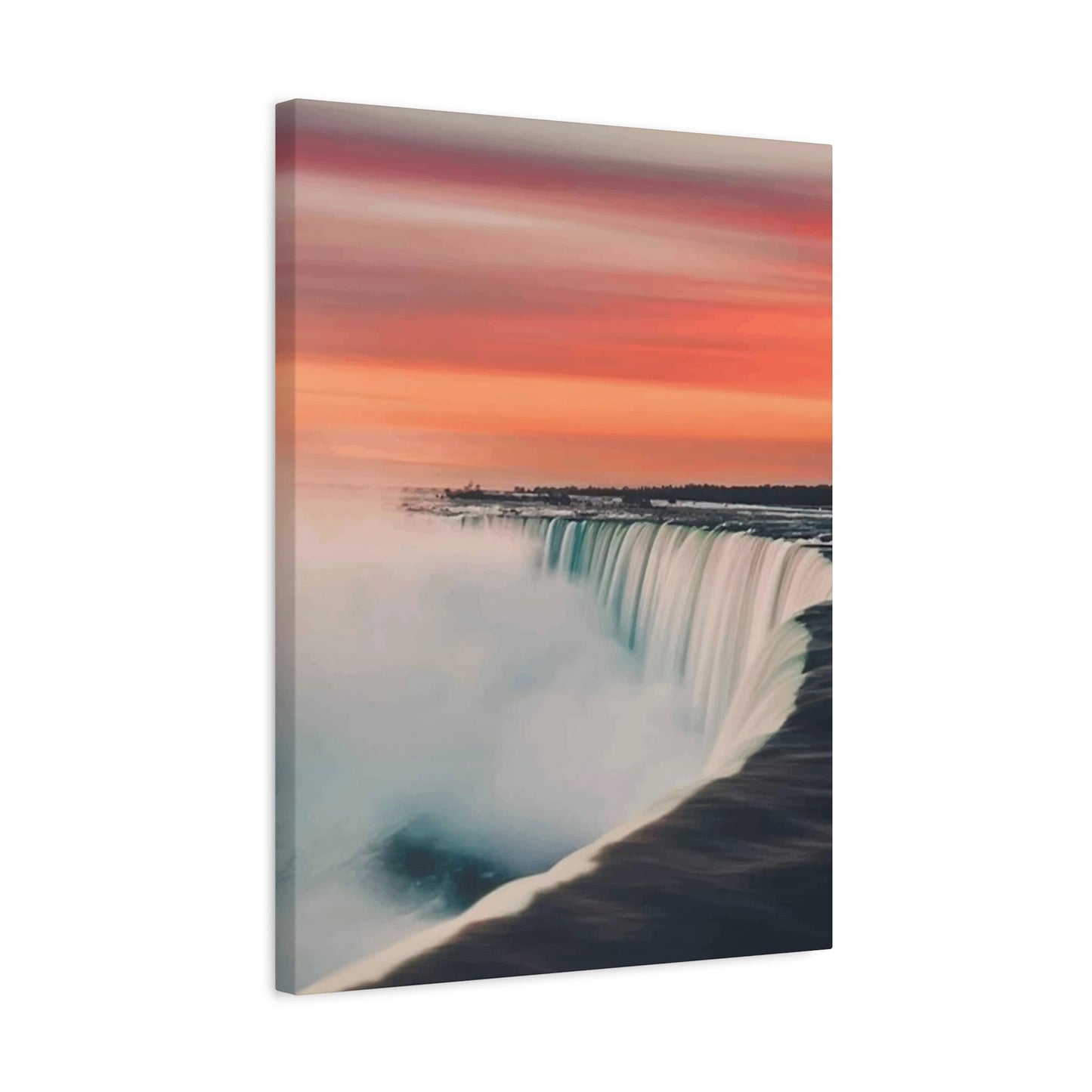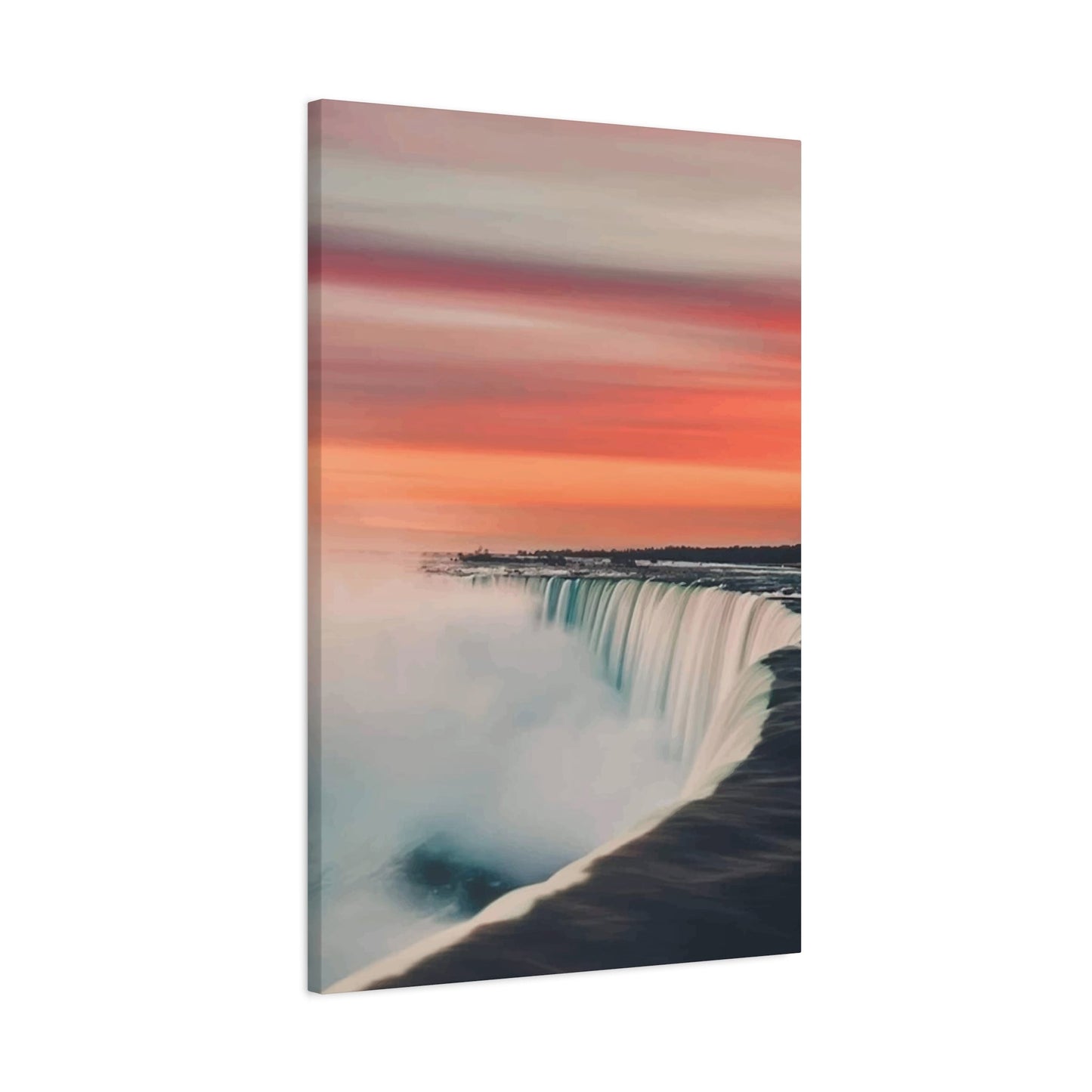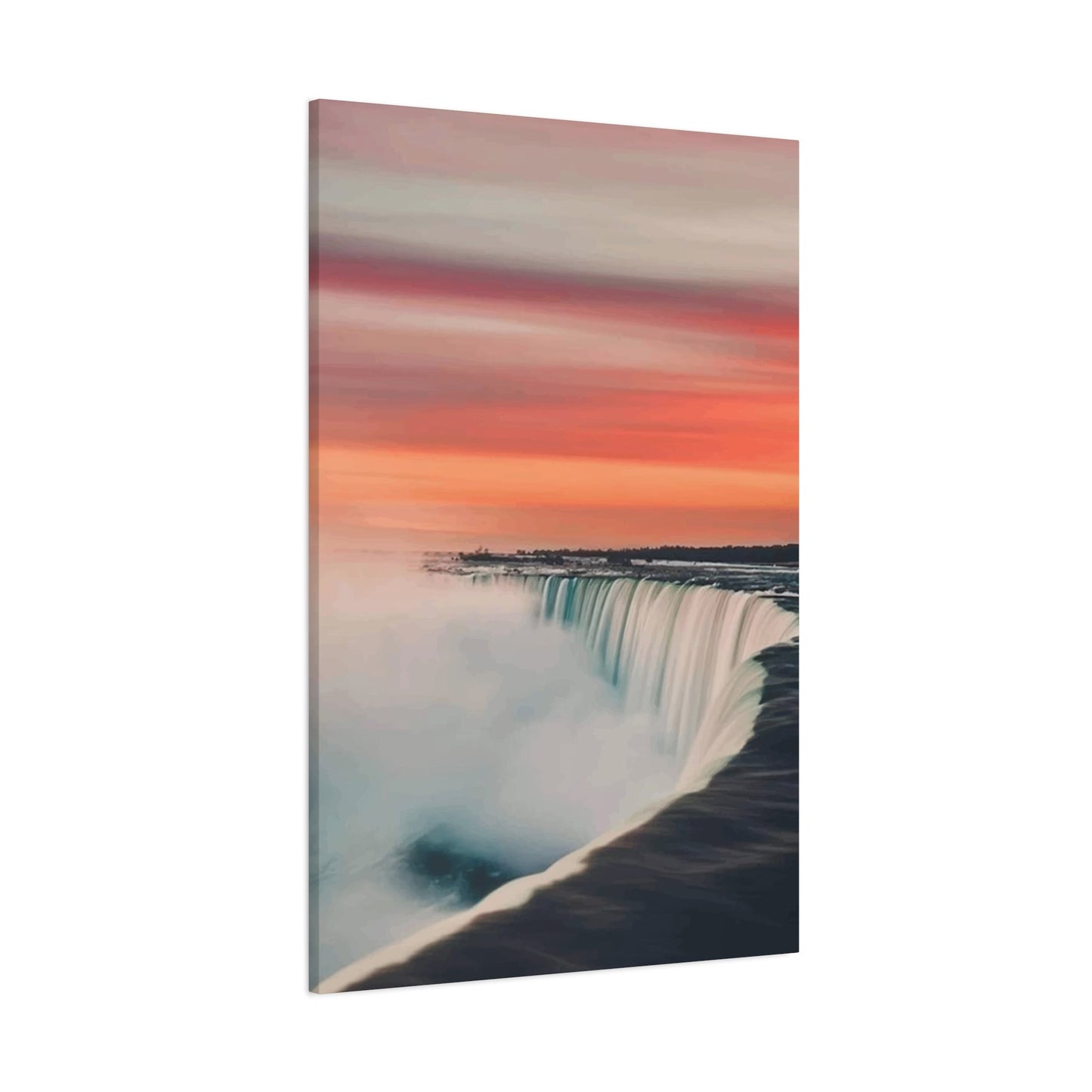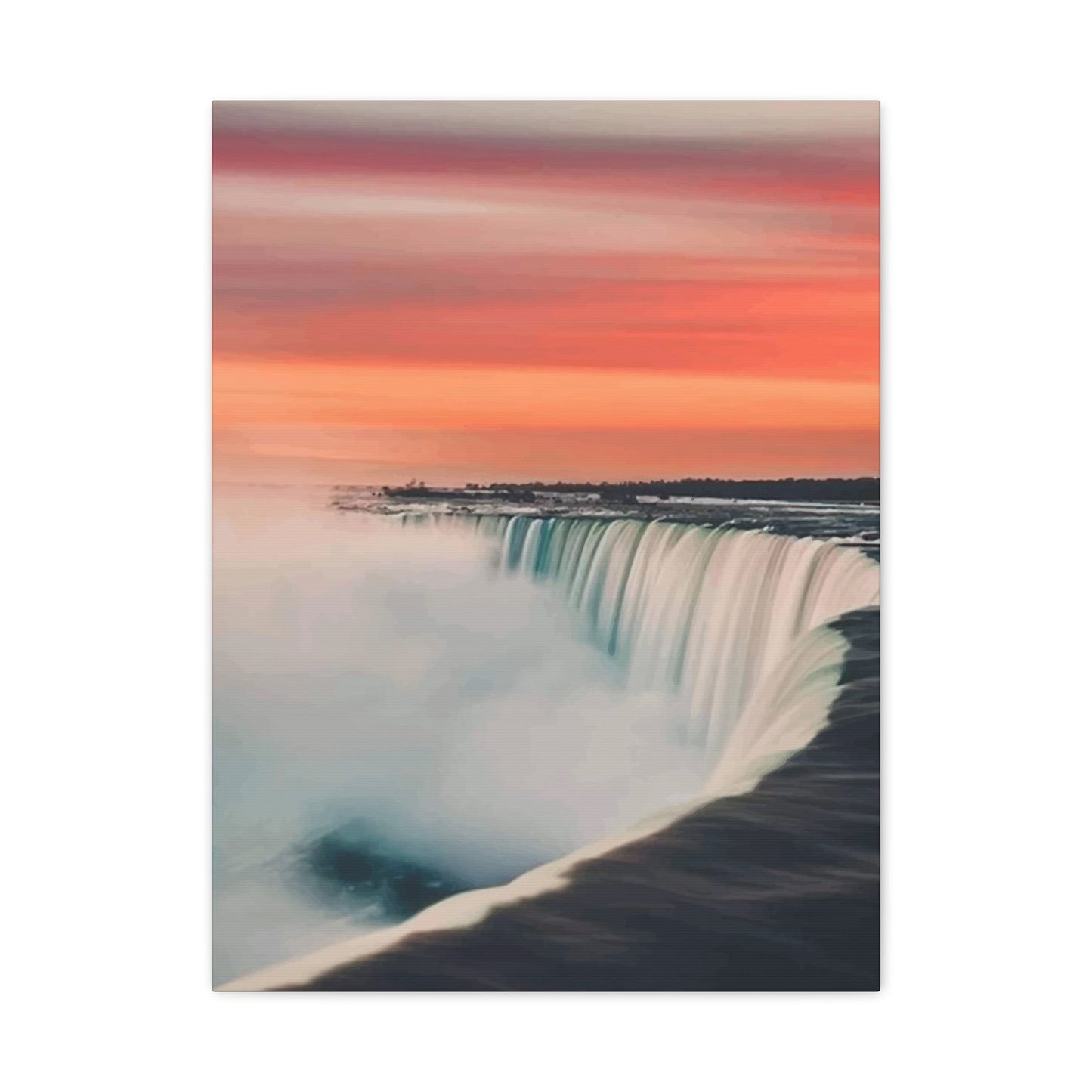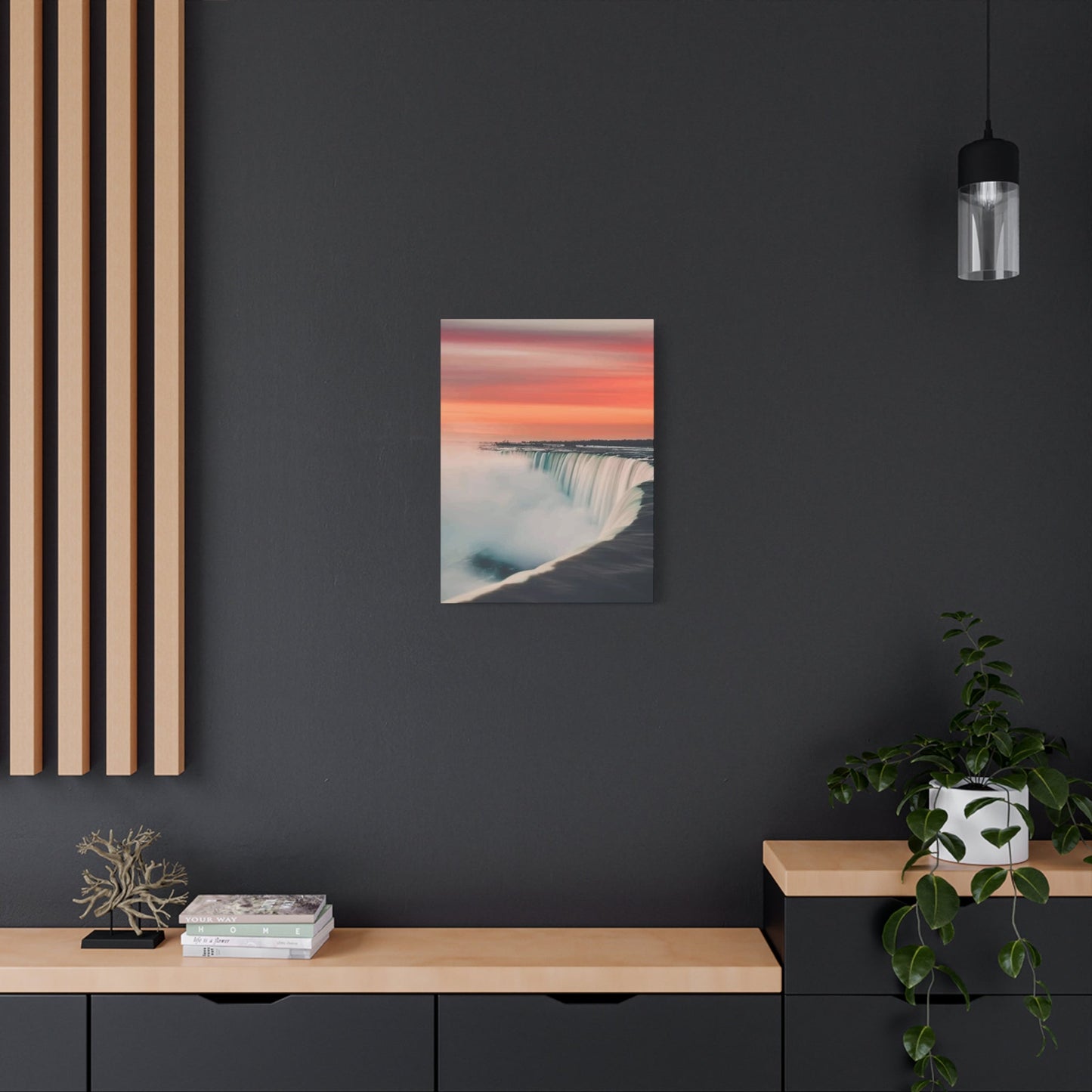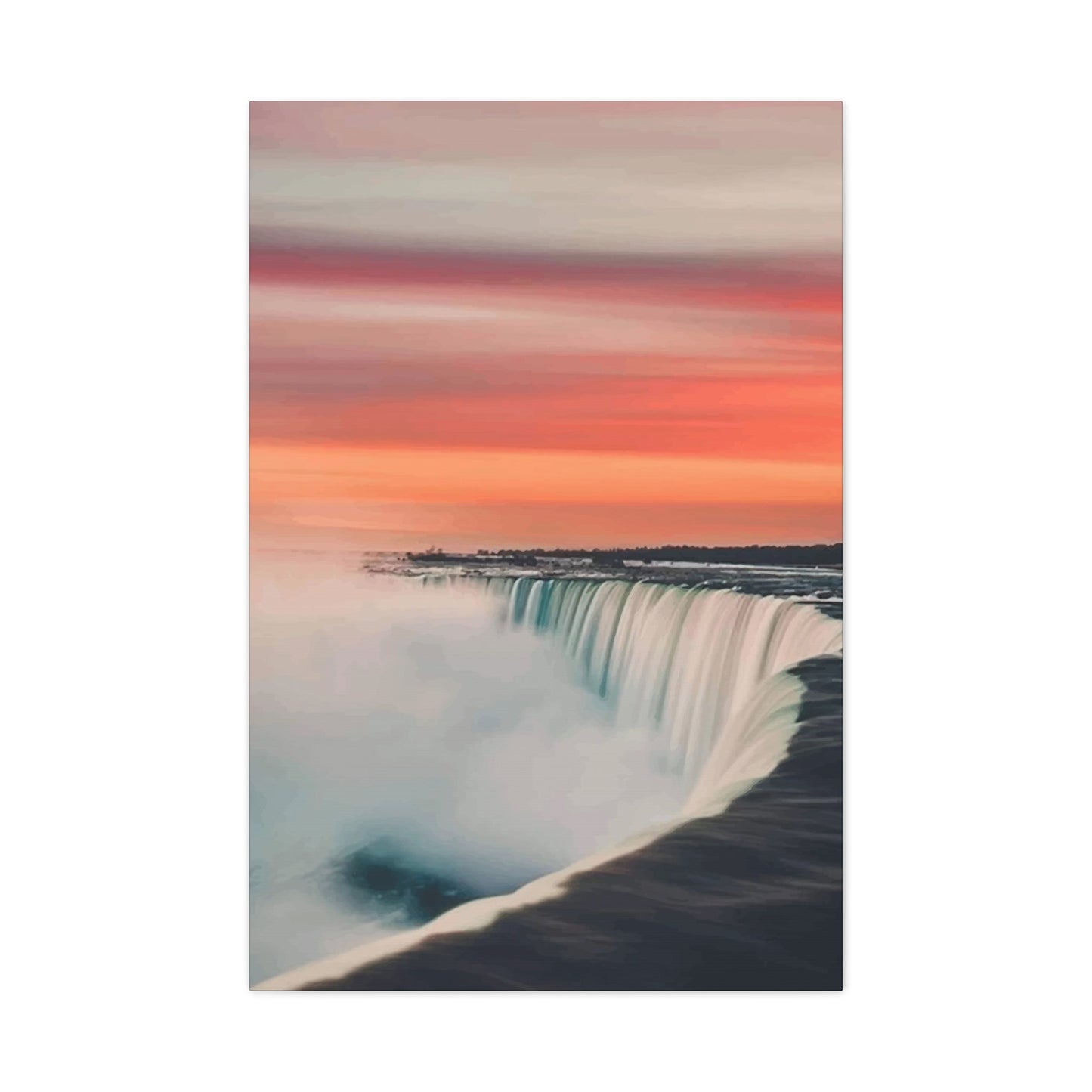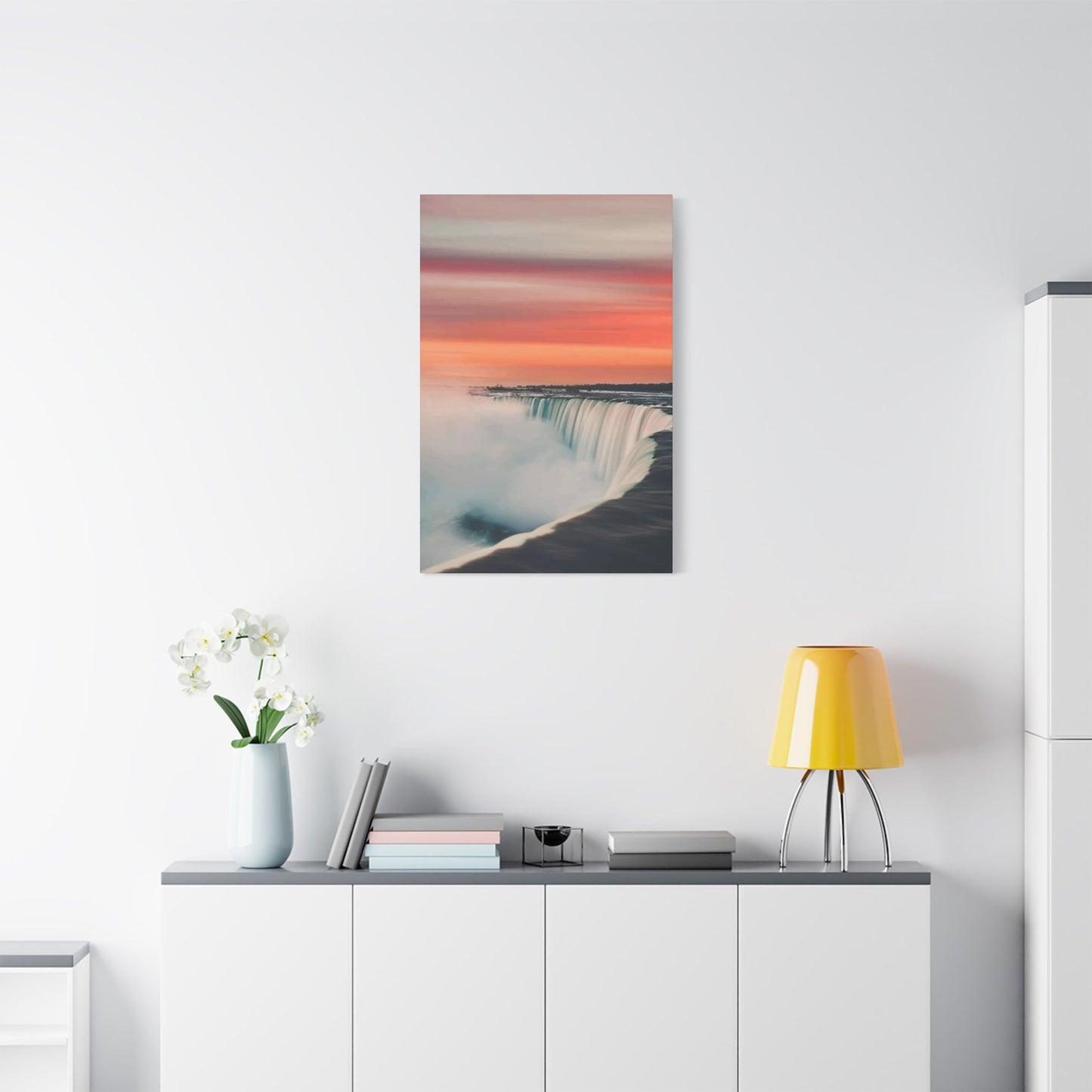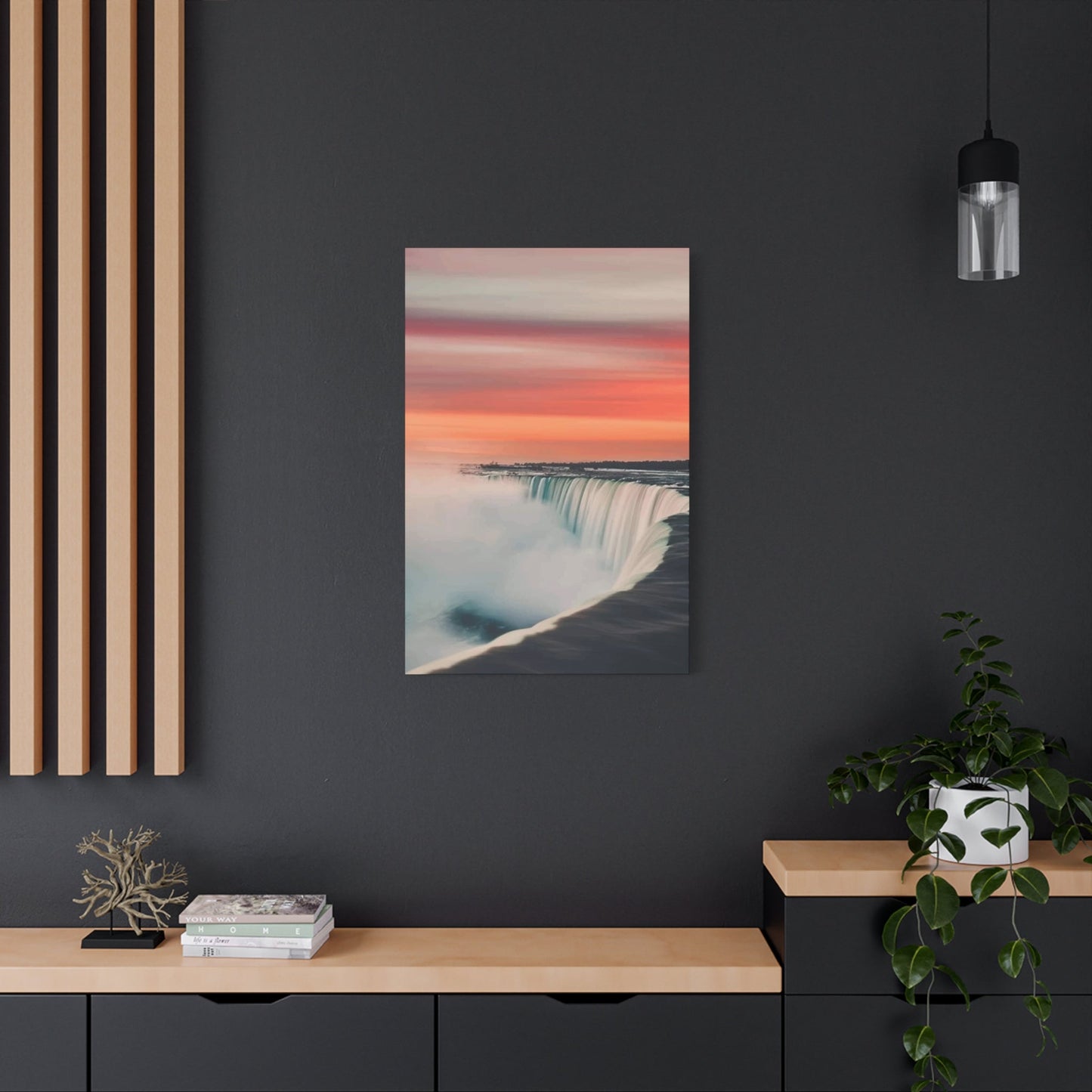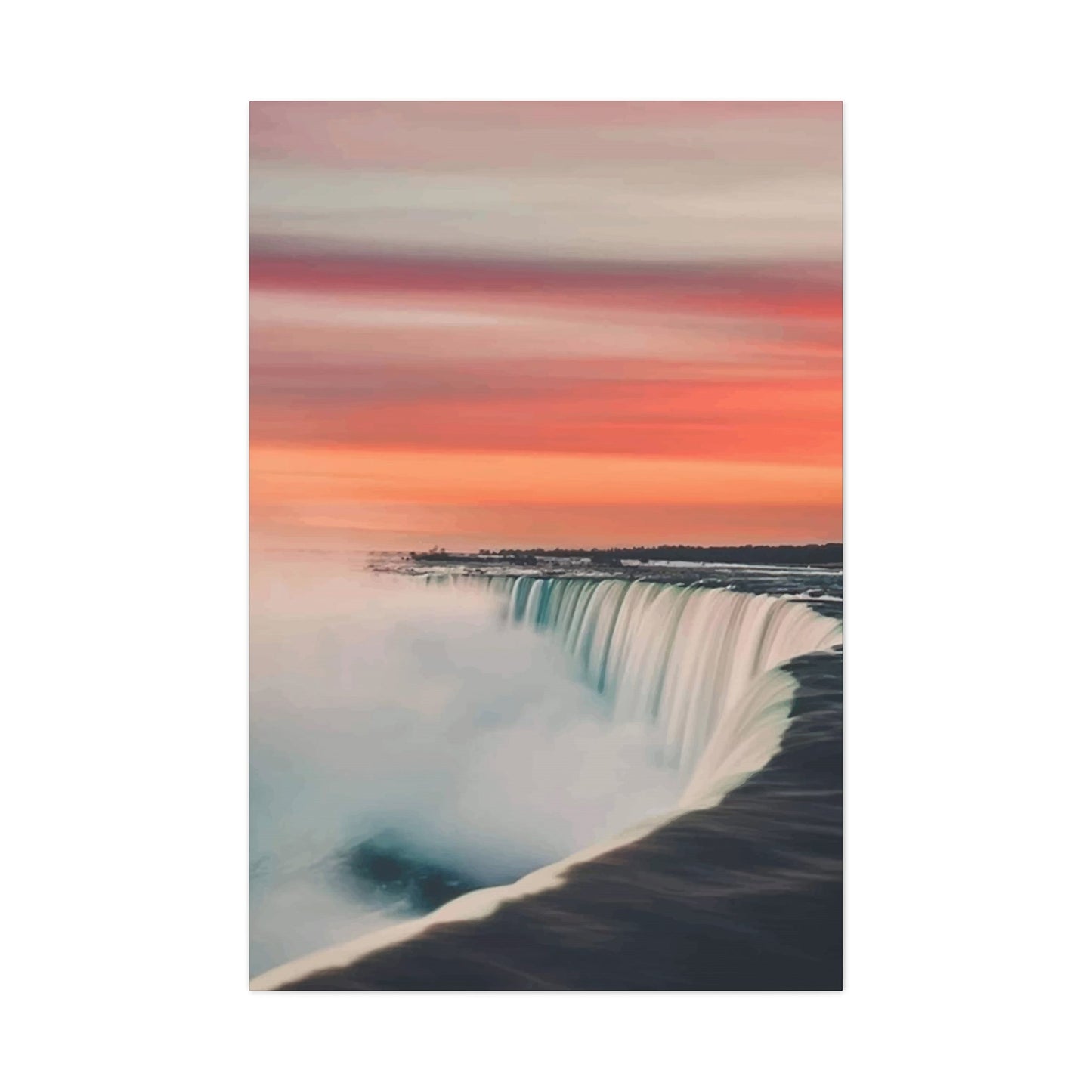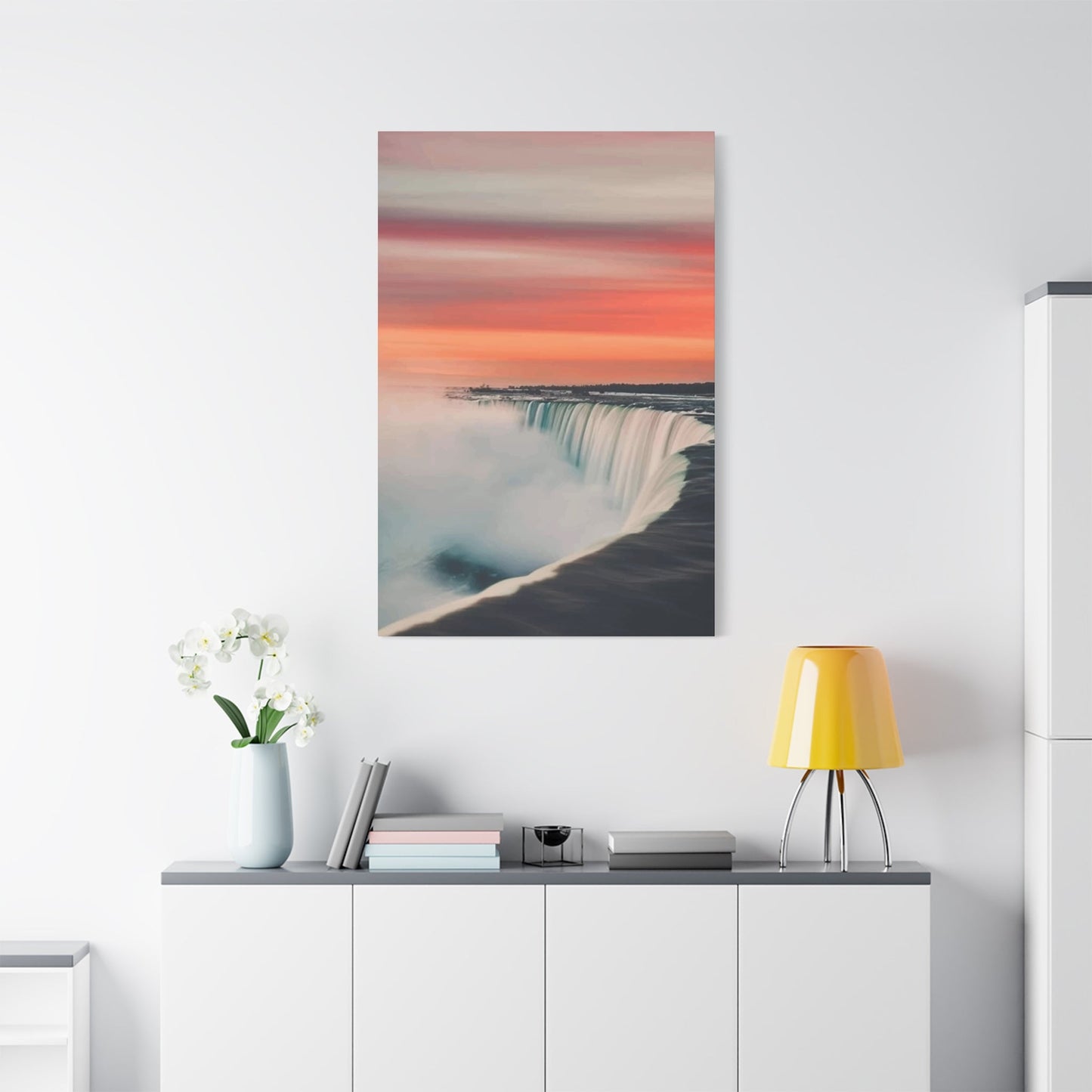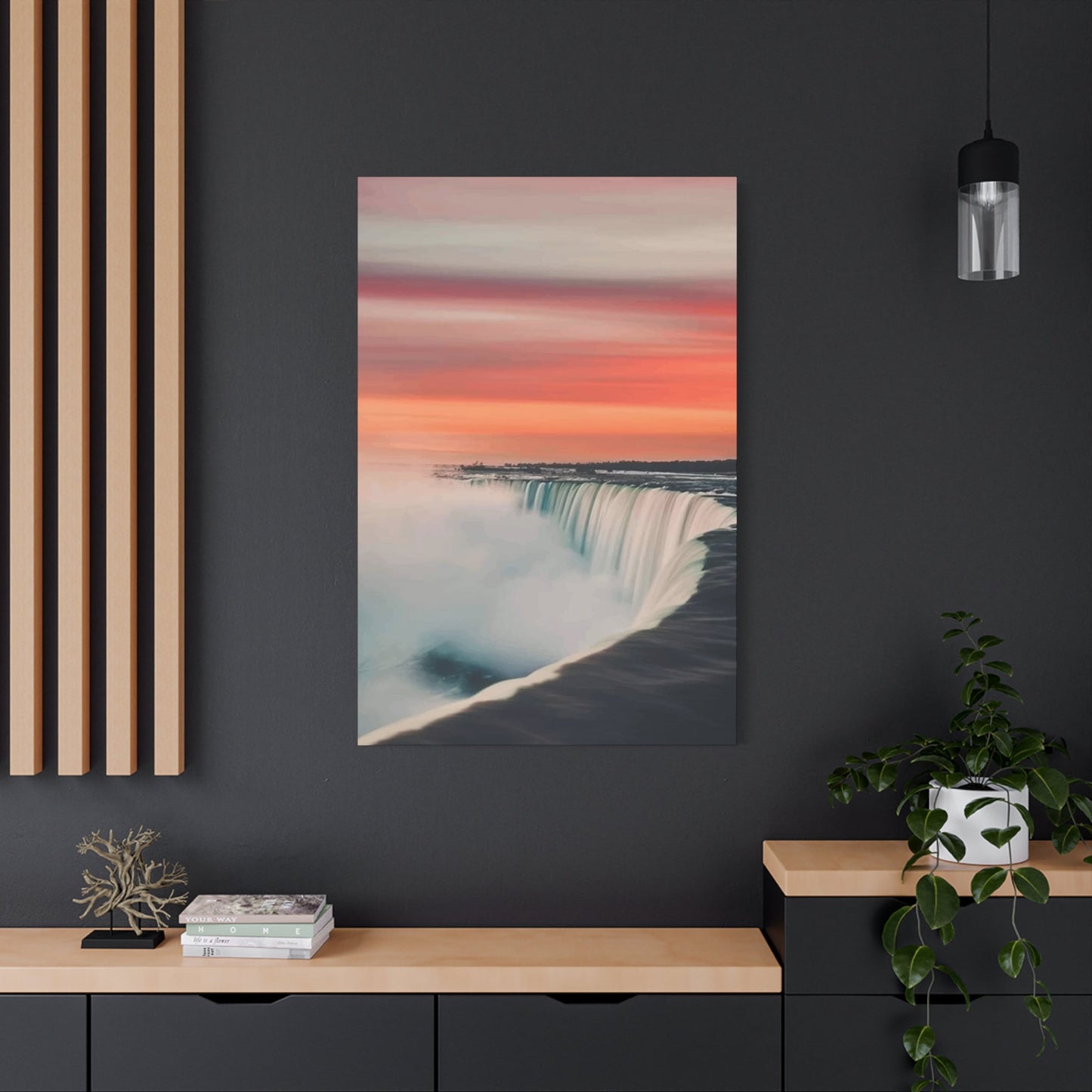Iconic Canadian Landscapes in Wall Art: A Journey Through Natural Beauty
Canada's artistic landscape represents one of the world's most vibrant tapestries of cultural expression, weaving together diverse traditions, breathtaking natural beauty, and the stories of countless communities that call this vast nation home. From the ancient pictographs carved into rocky shores by Indigenous peoples thousands of years ago to the contemporary installations gracing modern galleries in Toronto and Vancouver, Canadian art serves as both mirror and catalyst for the country's ongoing cultural evolution.
The artistic heritage of Canada cannot be separated from its geographic grandeur and cultural complexity. This nation, stretching from the Atlantic to the Pacific and northward to the Arctic, encompasses an extraordinary range of environments that have profoundly shaped artistic expression throughout history. The interplay between human creativity and natural splendor has produced a uniquely Canadian aesthetic that resonates far beyond national borders, influencing global conversations about identity, environment, and the role of art in society.
Canadian artists have consistently drawn inspiration from their surroundings, creating works that capture not only the physical beauty of landscapes but also the emotional and spiritual connections between people and place. This relationship extends beyond mere representation, encompassing complex negotiations of belonging, displacement, reconciliation, and hope that reflect the broader Canadian experience.
The artistic traditions of Canada's First Nations, Inuit, and Métis peoples form the foundation upon which all subsequent artistic development has built. These rich traditions, spanning millennia, offer profound insights into humanity's relationship with the natural world and continue to evolve while maintaining deep connections to ancestral knowledge and practices. The integration of Indigenous perspectives into contemporary Canadian art has created new forms of expression that honor traditional ways while addressing present-day realities and future possibilities.
As waves of immigrants from Europe, Asia, Africa, and beyond have made Canada their home, they have brought with them artistic traditions that have enriched and complicated the Canadian cultural landscape. This ongoing process of cultural exchange has produced hybrid forms of expression that reflect the complex realities of multicultural existence while contributing to a distinctly Canadian artistic identity.
The institutions, galleries, and cultural spaces that showcase Canadian art play crucial roles in both preserving artistic heritage and fostering innovation. From the National Gallery of Canada in Ottawa to community art centers in remote northern communities, these spaces serve as gathering places where diverse artistic traditions converge, interact, and evolve. They provide platforms for emerging artists while maintaining connections to established masters, creating bridges between generations and communities.
Canadian art education, from elementary school programs to university fine arts departments, continues to shape new generations of artists who will carry forward the traditions while pushing boundaries in new directions. These educational environments foster critical thinking about art's role in society while providing technical skills and historical knowledge that enable meaningful artistic contribution.
The commercial aspects of Canadian art, including galleries, auction houses, and art fairs, contribute to both the economic vitality of the arts community and the broader cultural conversation about value, accessibility, and artistic merit. These markets help sustain professional artistic practice while sometimes creating tensions between commercial success and artistic integrity.
Government support for the arts through agencies like the Canada Council for the Arts has played a significant role in fostering artistic development and ensuring that diverse voices have opportunities to contribute to the national cultural conversation. This support system, while sometimes controversial, has enabled experimental work and supported artists from marginalized communities who might otherwise lack access to resources and platforms.
The digital age has transformed Canadian art in profound ways, creating new possibilities for creation, distribution, and audience engagement while raising questions about authenticity, preservation, and the role of technology in artistic expression. Canadian artists have embraced digital media while grappling with its implications for traditional practices and cultural transmission.
International recognition of Canadian artists has grown significantly in recent decades, with Canadian works featured in major exhibitions worldwide and Canadian artists receiving prestigious international awards. This global presence has enhanced Canada's cultural diplomacy while exposing Canadian artists to diverse influences and collaborations that further enrich domestic artistic production.
The relationship between Canadian art and environmental consciousness has become increasingly prominent as climate change and environmental degradation pose unprecedented challenges. Artists have responded with works that both document environmental change and imagine alternative futures, contributing to broader conversations about sustainability and human responsibility.
Regional variations in Canadian art reflect the country's geographic and cultural diversity, with distinct artistic traditions emerging from the Maritime provinces, Quebec, Ontario, the Prairie provinces, British Columbia, and the territories. These regional differences contribute to the richness of Canadian artistic expression while sometimes creating tensions about representation and resource allocation.
Exploring Canada's Cultural Diversity Through Art
The artistic landscape of Canada serves as a living testament to the nation's remarkable cultural diversity, presenting a complex mosaic where traditional Indigenous practices intersect with immigrant traditions from across the globe. This cultural convergence has created an artistic environment unlike anywhere else in the world, where ancient petroglyphs share conceptual space with contemporary multicultural installations, and where artists from vastly different backgrounds find common ground in their Canadian experience.
The exploration of cultural diversity through Canadian art begins with recognizing the foundational contributions of Indigenous peoples, whose artistic traditions predate European contact by thousands of years. These traditions encompass not only visual arts but also performance, storytelling, and ceremonial practices that continue to influence contemporary artistic expression. The integration of Indigenous perspectives into mainstream Canadian art has been neither simple nor uncontested, involving complex negotiations about cultural appropriation, representation, and recognition that continue to evolve today.
French colonial influence brought European artistic traditions to Canadian shores, establishing artistic practices that blended Old World techniques with New World subjects and materials. The adaptation of European artistic styles to Canadian contexts created hybrid forms that reflected both cultural memory and environmental adaptation. Religious art, in particular, played a significant role in early French Canadian artistic development, with churches and religious institutions serving as primary patrons and exhibition spaces.
British colonial influence introduced different European traditions while also establishing institutional frameworks that would shape Canadian artistic development for generations. The tension between French and British cultural influences created a unique dynamic that continues to influence Quebec's distinct position within Canadian cultural discourse, contributing to artistic expressions that reflect both linguistic and cultural difference.
The arrival of immigrants from Eastern and Southern Europe in the late nineteenth and early twentieth centuries brought new artistic traditions that enriched Canadian cultural expression. These communities established cultural organizations, built distinctive religious and community structures, and created artistic works that reflected their experiences of displacement, adaptation, and belonging. The preservation of traditional crafts, music, and visual arts within these communities provided continuity with ancestral cultures while adapting to Canadian contexts.
Asian immigration to Canada, beginning with Chinese workers during the construction of the Canadian Pacific Railway and continuing through various waves of immigration from across Asia, introduced artistic traditions that have profoundly influenced contemporary Canadian art. The adaptation of traditional Asian art forms to Canadian contexts, combined with the development of new hybrid forms, has created distinctive contributions to Canadian artistic expression that reflect both cultural heritage and contemporary experience.
More recent immigration from Africa, Latin America, the Caribbean, and the Middle East has further enriched Canadian artistic diversity, bringing new perspectives, techniques, and themes that continue to expand the boundaries of Canadian artistic expression. These newer artistic traditions often grapple with questions of identity, belonging, and representation that resonate with earlier immigrant experiences while reflecting contemporary global contexts.
The institutional response to cultural diversity in Canadian art has evolved significantly over the past several decades. Museums, galleries, and cultural organizations have developed programming that celebrates diversity while grappling with questions about representation, accessibility, and cultural sensitivity. These efforts have sometimes been successful in creating more inclusive artistic spaces, while in other cases they have revealed the persistence of systemic barriers and the complexity of meaningful cultural engagement.
Educational institutions have played crucial roles in fostering cultural diversity in Canadian art, providing spaces where students from diverse backgrounds can explore their cultural heritage while developing contemporary artistic skills. Art schools and university programs have increasingly recognized the importance of diverse faculty and curriculum that reflects the multicultural reality of contemporary Canada.
The commercial art market's response to cultural diversity has been mixed, with some galleries and collectors embracing diverse artistic expression while others have been slower to recognize the value and significance of non-European artistic traditions. The development of specialized galleries, art fairs, and cultural events has helped create market opportunities for artists from diverse backgrounds while raising questions about segregation versus integration in artistic markets.
Funding agencies and government cultural policy have increasingly recognized the importance of supporting diverse artistic expression, implementing programs specifically designed to address historical underrepresentation and provide opportunities for artists from marginalized communities. These initiatives have had measurable impacts on artistic production while generating ongoing debates about the most effective approaches to supporting diversity in the arts.
The digital age has created new opportunities for exploring and sharing cultural diversity through art, enabling virtual exhibitions, online collaborations, and digital preservation of cultural traditions that might otherwise be lost. Social media platforms have provided new avenues for artists from diverse backgrounds to share their work and build audiences while creating new challenges related to cultural context and interpretation.
Contemporary Canadian artists increasingly work with themes of cultural hybridity, creating works that reflect the complexity of multicultural identity and the ongoing process of cultural negotiation that characterizes Canadian society. These artists often draw on multiple cultural traditions while addressing contemporary issues such as globalization, migration, and technological change.
The international recognition of Canada's cultural diversity through art has enhanced the country's cultural diplomacy and soft power, demonstrating to the world that diverse societies can create vibrant and innovative artistic cultures. This recognition has also created opportunities for Canadian artists to participate in international exhibitions and collaborations that further enrich domestic artistic production.
Regional variations in cultural diversity create different artistic ecosystems across Canada, with major urban centers like Toronto, Montreal, and Vancouver developing particularly rich multicultural artistic scenes while smaller communities maintain different relationships between cultural diversity and artistic expression. These regional differences contribute to the overall richness of Canadian artistic diversity while creating opportunities for cultural exchange and collaboration.
How Canadian Landscapes Inspire Artists
The vast and varied landscapes of Canada have served as an inexhaustible source of inspiration for artists throughout the nation's history, shaping not only the subject matter of Canadian art but also its fundamental character and aesthetic sensibility. From the rugged coastlines of the Maritimes to the expansive prairies, from the ancient forests of British Columbia to the stark beauty of the Arctic, Canadian landscapes have provided artists with visual material that is both spectacular in its grandeur and intimate in its detail.
The relationship between Canadian artists and landscape extends far beyond simple representation, encompassing complex emotional, spiritual, and philosophical connections that reflect broader themes of national identity, environmental consciousness, and humanity's place within the natural world. This relationship has evolved throughout Canadian art history, influenced by changing artistic movements, environmental awareness, and cultural perspectives on nature and wilderness.
The earliest European artists to encounter Canadian landscapes were often overwhelmed by their scale and unfamiliarity, struggling to apply European artistic conventions to environments that defied easy categorization or representation. These early attempts at landscape representation reveal not only the visual characteristics of Canadian environments but also the cultural lens through which European colonists perceived and interpreted the New World.
The development of distinctly Canadian approaches to landscape painting emerged gradually as artists developed familiarity with local environments and began to develop aesthetic strategies appropriate to Canadian conditions. This process involved not only technical adaptation but also philosophical adjustment, as artists grappled with concepts of wilderness, sublimity, and beauty that differed significantly from European models.
The Group of Seven, perhaps the most famous movement in Canadian art history, exemplified the potential for Canadian landscapes to inspire artistic innovation and national cultural expression. These artists developed techniques and approaches specifically suited to Canadian environments, creating works that captured not only the visual appearance of Canadian landscapes but also their emotional and spiritual impact. Their influence on subsequent generations of Canadian artists cannot be overstated, establishing landscape painting as a central tradition in Canadian art.
The seasonal cycle that characterizes much of Canada provides artists with constantly changing visual material, from the brilliant colors of autumn to the stark beauty of winter landscapes. Canadian artists have become particularly adept at capturing the unique qualities of light and atmosphere that characterize different seasons, developing techniques that convey not only visual appearance but also the sensory experience of Canadian weather and climate.
Winter landscapes, in particular, have become synonymous with Canadian artistic expression, reflecting both the practical reality of Canadian climate and the cultural significance of winter in Canadian identity. Artists have developed sophisticated approaches to representing snow, ice, and winter light that capture both the beauty and the harshness of Canadian winters while exploring themes of survival, adaptation, and resilience.
The representation of water in Canadian landscape art reflects the nation's abundance of lakes, rivers, and coastlines, with artists developing particular expertise in capturing the various moods and characteristics of Canadian waterways. From the turbulent waters of the Great Lakes to the peaceful reflections of northern lakes, water serves as both subject matter and metaphor in Canadian landscape art, representing themes of movement, change, and continuity.
Forest landscapes have played a particularly significant role in Canadian artistic expression, reflecting both the economic importance of forestry in Canadian history and the cultural significance of forests in Canadian identity. Artists have explored forests as places of mystery, spirituality, and refuge while also addressing themes of exploitation, conservation, and environmental destruction.
Mountain landscapes, particularly those of the Canadian Rockies, have inspired generations of artists with their dramatic beauty and spiritual associations. The artistic representation of Canadian mountains has evolved from early topographical documentation to contemporary explorations of environmental change and human impact on pristine environments.
Prairie landscapes present unique challenges and opportunities for artistic expression, with their vast expanses of sky and subtle topographical variations requiring different approaches than the more dramatic landscapes found elsewhere in Canada. Prairie artists have developed distinctive techniques for capturing the particular qualities of prairie light, weather, and seasonal change while exploring themes of isolation, community, and agricultural life.
Arctic landscapes represent some of the most challenging and rewarding subjects for Canadian artists, requiring both physical endurance and artistic innovation to capture environments that are both beautiful and hostile. The artistic representation of Arctic landscapes has gained particular relevance in the context of climate change, with artists documenting disappearing ice formations and changing ecosystems while exploring broader themes of environmental responsibility and global connection.
The influence of Indigenous perspectives on landscape representation has profoundly enriched Canadian artistic expression, introducing concepts of land as relationship rather than commodity, and emphasizing spiritual and cultural connections that extend beyond visual appearance. These perspectives have challenged non-Indigenous artists to reconsider their approaches to landscape while providing Indigenous artists with platforms for expressing traditional relationships with land in contemporary contexts.
Contemporary Canadian landscape art increasingly addresses environmental concerns, with artists using landscape representation to document environmental change, advocate for conservation, and explore humanity's relationship with the natural world. This environmentally conscious approach to landscape art reflects broader cultural shifts in environmental awareness while maintaining connections to traditional Canadian artistic themes.
The impact of technology on landscape art has created new possibilities for representation and documentation, from aerial photography that reveals landscape patterns invisible from ground level to digital manipulation that enables artistic exploration of landscape transformation over time. These technological tools have expanded the range of artistic expression while raising questions about authenticity and the relationship between representation and reality.
Urban landscapes have become increasingly important subjects for Canadian artists, reflecting the reality that most Canadians live in urban environments while exploring themes of development, community, and the intersection between natural and built environments. The artistic representation of urban landscapes often addresses tensions between environmental preservation and economic development while celebrating the beauty that can be found in human-modified environments.
The commercial and institutional support for landscape art in Canada reflects its central role in Canadian cultural identity, with collectors, museums, and galleries maintaining strong interest in landscape works while supporting contemporary artists who continue to explore landscape themes. This support system helps maintain the vitality of landscape art while encouraging innovation and experimentation.
Indigenous Art and Its Role in Canadian Identity
Indigenous art forms the foundational bedrock of Canadian artistic expression, representing not merely one component of the national cultural mosaic but rather the deep roots from which all subsequent Canadian artistic development has grown. The artistic traditions of First Nations, Inuit, and Métis peoples encompass thousands of years of sophisticated cultural expression, embodying complex relationships between humans, nature, and the spiritual realm that continue to influence contemporary Canadian identity and artistic practice.
The role of Indigenous art in shaping Canadian identity cannot be understood without acknowledging the devastating impacts of colonialism, residential schools, and cultural suppression policies that attempted to erase Indigenous artistic traditions and ways of knowing. The survival and resurgence of Indigenous artistic expression represents remarkable resilience and cultural strength, demonstrating the fundamental importance of these traditions to Indigenous communities and their irreplaceable contribution to broader Canadian culture.
Traditional Indigenous art forms encompass an extraordinary range of practices including pictographs and petroglyphs, beadwork, quillwork, carving, weaving, pottery, and ceremonial objects that served not only aesthetic purposes but also functional, spiritual, and educational roles within Indigenous communities. These art forms encoded complex knowledge systems, including ecological knowledge, spiritual beliefs, social structures, and historical narratives that were passed down through generations.
The artistic traditions of different Indigenous peoples across Canada reflect both the diversity of Indigenous cultures and their deep connections to specific landscapes and environments. Plains peoples developed distinctive artistic traditions reflecting their relationship with buffalo and grassland environments, while coastal peoples created art forms that reflected their connections to marine environments and salmon runs. Arctic peoples developed unique artistic expressions adapted to harsh northern conditions while maintaining sophisticated aesthetic sensibilities.
Contemporary Indigenous artists have played crucial roles in cultural revitalization, using traditional techniques and themes while engaging with contemporary artistic movements and addressing present-day issues facing Indigenous communities. This work often involves complex negotiations between maintaining cultural authenticity and adapting to contemporary contexts, creating hybrid forms that honor ancestral traditions while speaking to contemporary experiences.
The integration of Indigenous perspectives into mainstream Canadian artistic institutions has been a gradual and sometimes contentious process, involving ongoing efforts to address historical exclusion and create more inclusive spaces for Indigenous artistic expression. Major museums and galleries have developed Indigenous curatorial programs and hired Indigenous staff while working to decolonize their collections and exhibition practices.
Indigenous art has played a significant role in education about Canadian history and the ongoing impacts of colonialism, providing powerful vehicles for sharing Indigenous perspectives and experiences that have been marginalized or excluded from mainstream historical narratives. Through artistic expression, Indigenous artists have documented historical trauma while celebrating cultural survival and resistance.
The relationship between Indigenous art and land acknowledgment practices reflects broader shifts in Canadian society toward recognizing Indigenous rights and relationships with traditional territories. Artistic works often serve as vehicles for expressing complex relationships between Indigenous peoples and their ancestral lands, addressing themes of displacement, environmental degradation, and cultural reconnection.
The commercial success of Indigenous art has created both opportunities and challenges for Indigenous communities, providing economic benefits while raising concerns about cultural appropriation and the commercialization of sacred or culturally sensitive materials. The development of protocols and guidelines for ethical engagement with Indigenous art has become increasingly important as markets for Indigenous art have expanded.
The influence of Indigenous artistic traditions on non-Indigenous Canadian artists has been significant and sometimes controversial, with questions about cultural appropriation and respectful engagement remaining active topics of discussion within Canadian artistic communities. Some non-Indigenous artists have developed respectful collaborative relationships with Indigenous artists and communities, while others have been criticized for inappropriate use of Indigenous imagery or techniques.
Contemporary Indigenous artists have gained increasing international recognition, representing Canada in major international exhibitions and receiving prestigious awards while maintaining connections to their cultural communities. This international success has enhanced awareness of Indigenous contributions to Canadian culture while providing platforms for addressing global issues related to Indigenous rights and environmental protection.
The role of Indigenous art in reconciliation efforts reflects its potential to build bridges between Indigenous and non-Indigenous Canadians while fostering understanding and respect for Indigenous cultures and perspectives. Artistic collaborations and cultural exchanges have created opportunities for meaningful dialogue while celebrating the richness of Indigenous artistic traditions.
Educational initiatives focusing on Indigenous art have expanded significantly in recent years, with schools and universities developing programs that provide both Indigenous and non-Indigenous students with opportunities to learn about Indigenous artistic traditions and their cultural contexts. These programs often emphasize respectful engagement and cultural sensitivity while providing practical artistic training.
The digital age has created new opportunities for preserving and sharing Indigenous artistic traditions, enabling the documentation of traditional techniques and the creation of virtual exhibitions that make Indigenous art accessible to broader audiences. Digital platforms have also provided Indigenous artists with new tools for artistic expression while maintaining connections to traditional practices and communities.
Government support for Indigenous art has increased significantly through dedicated funding programs and policy initiatives that recognize the special status of Indigenous cultural expression within Canadian cultural policy. These programs provide financial support for Indigenous artists while acknowledging the unique challenges they face in maintaining cultural traditions and developing contemporary artistic practices.
The role of Indigenous women in artistic traditions has gained increased recognition, with female artists playing crucial roles in maintaining traditional practices while pioneering contemporary innovations. The contributions of Indigenous women to Canadian artistic expression encompass both traditional roles in textile arts and contemporary leadership in various artistic media.
Urban Indigenous artistic communities have developed distinctive practices that reflect the experiences of Indigenous peoples living in cities while maintaining connections to traditional cultures and rural communities. These urban artistic expressions often address themes of identity, displacement, and cultural adaptation while contributing to broader conversations about Indigenous presence in contemporary Canadian society.
The Influence of Nature on Canadian Artistic Expression
The profound influence of nature on Canadian artistic expression extends far beyond simple landscape representation, permeating every aspect of Canadian art with themes, materials, techniques, and philosophical approaches that reflect the nation's intimate relationship with its natural environment. This influence has shaped not only what Canadian artists create but how they think about art, beauty, and humanity's place within the broader ecological community that encompasses all life.
The abundance and diversity of Canadian natural environments have provided artists with an extraordinary range of subjects, from the intimate details of forest floors to the vast expanses of prairie skies, from the delicate patterns of frost on windows to the dramatic power of northern lights dancing across Arctic skies. This environmental richness has fostered artistic sensibilities that celebrate both grandeur and subtlety, encouraging artists to develop techniques capable of capturing the full range of natural phenomena that characterize Canadian environments.
The seasonal rhythms that govern much of Canadian life have profoundly influenced artistic expression, creating annual cycles of inspiration and activity that reflect the natural world's patterns of growth, dormancy, and renewal. Artists have developed sophisticated approaches to representing seasonal change, not merely as visual transformation but as emotional and spiritual experience that connects human consciousness to natural cycles.
The harsh beauty of Canadian winters has inspired artistic expressions that capture both the aesthetic appeal of snow and ice and the psychological and spiritual dimensions of surviving and thriving in challenging environmental conditions. Winter art often explores themes of endurance, adaptation, and finding beauty in adversity that reflect broader aspects of Canadian character and identity.
Spring emergence from winter has provided artists with powerful metaphors for renewal, hope, and rebirth that extend beyond seasonal representation to encompass themes of personal and cultural transformation. The dramatic changes that characterize Canadian springs, from ice break-up to sudden forest greening, have inspired artistic works that celebrate the power of natural forces and the resilience of life.
Summer abundance in Canadian environments has inspired artistic expressions that celebrate fertility, growth, and the brief but intense period of maximum natural activity that characterizes much of the Canadian year. Artists have captured not only the visual richness of Canadian summers but also their emotional significance as times of celebration, community gathering, and connection with the natural world.
Autumn transformations have provided Canadian artists with some of their most spectacular subject matter, with the brilliant colors of changing leaves inspiring artistic techniques and color theories that have influenced artistic practice far beyond seasonal representation. The poignancy of autumn beauty, with its implicit acknowledgment of approaching winter, has inspired artistic meditations on mortality, change, and the cyclical nature of existence.
The materials available in Canadian natural environments have directly influenced artistic practice, with artists incorporating local stones, woods, plants, and other natural materials into their works. This use of local materials has created distinctive regional artistic characteristics while fostering sustainable artistic practices that minimize environmental impact.
Water, in its many forms from liquid streams to solid ice to atmospheric vapor, has provided Canadian artists with endless opportunities for exploring themes of movement, change, and transformation. The representation of water in Canadian art has developed sophisticated techniques for capturing its various states and moods while using water as metaphor for emotional and spiritual themes.
The relationship between light and Canadian natural environments has inspired artistic innovations in representing the unique qualities of northern light, from the long shadows of winter afternoons to the extended twilight of summer evenings. Canadian artists have become particularly skilled at capturing atmospheric effects that reflect the distinctive characteristics of northern latitudes.
Wildlife has provided Canadian artists with subjects that embody the wildness and freedom that many associate with Canadian identity, while also raising questions about humanity's relationship with other species and the responsibilities that come with environmental stewardship. The artistic representation of Canadian wildlife often explores themes of respect, wonder, and environmental ethics.
The influence of natural environments on artistic technique has led Canadian artists to develop approaches to color, composition, and brushwork that reflect the specific challenges and opportunities presented by Canadian subjects. These technical innovations have contributed to distinctively Canadian approaches to artistic representation while influencing broader artistic traditions.
The spiritual dimensions of nature have profoundly influenced Canadian artistic expression, with many artists finding in natural environments sources of transcendent experience that inform their artistic practice. This spiritual connection to nature often reflects Indigenous influences while also drawing on various religious and philosophical traditions that emphasize humanity's interconnection with the natural world.
Environmental change and degradation have increasingly influenced Canadian artistic expression, with artists documenting disappearing species, changing ecosystems, and human impacts on natural environments. This environmentally conscious art serves both as historical record and as advocacy for environmental protection and sustainable living practices.
The relationship between urban and natural environments has become increasingly important in Canadian artistic expression, with artists exploring how natural elements persist within urban contexts and how urban development affects natural systems. This work often addresses tensions between development and conservation while celebrating the resilience of natural systems.
Climate change has emerged as a particularly significant influence on contemporary Canadian artistic expression, with artists documenting changing weather patterns, disappearing ice formations, and shifting ecosystems while exploring themes of environmental responsibility and adaptation to environmental change.
The influence of natural environments on artistic education has led Canadian art schools to develop programs that emphasize outdoor observation, environmental awareness, and sustainable artistic practices. These educational approaches foster new generations of artists who understand their connection to and responsibility for natural environments.
The commercial market for nature-inspired Canadian art reflects broader cultural values that celebrate natural beauty while sometimes creating tensions between artistic integrity and commercial appeal. The success of nature-themed art in commercial markets has provided economic support for artists while raising questions about the commodification of natural beauty.
The international recognition of Canadian nature-inspired art has enhanced Canada's cultural reputation while demonstrating to global audiences the distinctive character of Canadian environments and their influence on artistic expression. This international exposure has created opportunities for cultural exchange while maintaining the unique characteristics that distinguish Canadian artistic expression.
The preservation and conservation of natural environments that inspire artistic expression has become increasingly important as development pressures and environmental change threaten landscapes that have historically provided artistic inspiration. Artists have become advocates for environmental protection while documenting threatened environments through their artistic work.
The future influence of nature on Canadian artistic expression will be shaped by environmental change, urbanization, and evolving relationships between humans and natural systems. The continued vitality of nature-inspired Canadian art will depend on maintaining access to natural environments while adapting to changing environmental conditions and cultural contexts.
Urban vs. Rural: Contrasting Themes in Canadian Art
The dichotomy between urban and rural experiences has created one of the most compelling and persistent themes in Canadian artistic expression, reflecting the nation's ongoing negotiation between modernity and tradition, development and conservation, community and anonymity. This contrast has produced rich artistic explorations that examine not only the visual differences between urban and rural environments but also the psychological, social, and cultural implications of living in these different contexts.
Rural Canadian art often emphasizes themes of connection to land, seasonal rhythms, traditional ways of life, and intimate community relationships that have historically characterized agricultural and resource-based communities. Artists working with rural themes frequently explore the beauty and challenges of living close to natural cycles while examining how economic and social changes have affected traditional rural communities.
The representation of agricultural landscapes in Canadian art reflects both the practical importance of farming to Canadian society and the cultural significance of agricultural life in Canadian identity. Artists have documented the beauty of cultivated landscapes while exploring themes of stewardship, sustainability, and the relationship between human activity and natural systems that characterize agricultural life.
Small-town life has provided Canadian artists with subjects that emphasize community cohesion, shared values, and the intimate social relationships that characterize communities where everyone knows their neighbors. These artistic explorations often examine both the benefits and limitations of close-knit communities while celebrating the sense of belonging that characterizes many rural experiences.
The economic challenges facing rural Canadian communities have provided artists with opportunities to examine themes of economic transition, population decline, and the struggle to maintain viable communities in the face of economic and social change. This work often documents disappearing ways of life while advocating for the value and importance of rural communities.
Urban Canadian art, in contrast, often emphasizes themes of diversity, anonymity, rapid change, and the complex social dynamics that characterize city life. Urban artists frequently explore the energy and excitement of city living while also examining the challenges of finding community and meaning within large, impersonal urban environments.
The representation of Canadian cities in art has evolved significantly as urban populations have grown and urban environments have become more complex and diverse. Early urban art often focused on industrial development and economic growth, while contemporary urban art more frequently addresses themes of multiculturalism, social inequality, and environmental sustainability within urban contexts.
The architecture of Canadian cities has provided artists with subjects that reflect changing aesthetic values, technological capabilities, and social priorities. From historic buildings that connect contemporary cities to their past to modern skyscrapers that represent economic aspirations, urban architecture serves as both subject matter and symbol in Canadian artistic expression.
Street life and public spaces have become increasingly important subjects for Canadian urban artists, providing opportunities to explore themes of social interaction, cultural diversity, and public life that characterize healthy urban communities. This work often celebrates the vitality of urban public spaces while examining how urban design affects social relationships and community formation.
The contrast between urban and rural approaches to artistic practice reflects different relationships to materials, subjects, and audiences that characterize these different environments. Rural artists often work more closely with natural materials and seasonal rhythms, while urban artists have greater access to technological resources and diverse cultural influences.
Transportation systems and infrastructure have provided artists with subjects that explore the connections between urban and rural areas while examining how mobility affects identity and community relationships. The artistic representation of highways, railways, and airports often addresses themes of movement, connection, and the compression of space and time that characterizes contemporary life.
The environmental implications of urban versus rural living have become increasingly important themes in Canadian art, with artists exploring how different living patterns affect resource consumption, environmental impact, and relationships with natural systems. This work often addresses tensions between urban convenience and environmental sustainability while examining the environmental costs of different lifestyle choices.
The relationship between urban and rural economies has provided artists with opportunities to explore themes of economic interdependence, resource extraction, and the flow of materials and people between different regions. This work often addresses the economic relationships that connect urban and rural areas while examining how economic change affects different communities.
Cultural differences between urban and rural communities have inspired artistic explorations that examine varying values, lifestyles, and worldviews that sometimes create tensions within Canadian society. These works often seek to build understanding between different communities while celebrating the diversity that characterizes contemporary Canada.
The migration of people from rural to urban areas, and sometimes in the reverse direction, has provided artists with subjects that explore themes of adaptation, loss, and the search for belonging in new environments. This migration-themed art often addresses the personal costs and benefits of geographic mobility while examining how place shapes identity.
The impact of technology on urban and rural communities has created new artistic subjects that explore how technological change affects different communities in different ways. Rural communities may struggle with limited technological access while urban communities grapple with information overload and technological dependence.
Educational opportunities and cultural resources differ significantly between urban and rural areas, creating different contexts for artistic development and cultural participation. Artists have explored these differences while examining how access to education and culture affects individual and community development.
The representation of youth experiences in urban versus rural contexts has become increasingly important as young people face different opportunities and challenges depending on where they live. This work often addresses themes of ambition, limitation, and the choices that young people face about where and how to build their lives.
Famous Canadian Artists and Their Cultural Impact
The pantheon of famous Canadian artists encompasses a diverse array of individuals whose creative visions have not only defined Canadian artistic expression but have also profoundly influenced global art movements and cultural conversations. These artists have served as cultural ambassadors, pioneering innovators, and chroniclers of Canadian experience while contributing to broader international dialogues about art, identity, and social change.
Tom Thomson stands as perhaps the most iconic figure in Canadian art history, despite his brief career and tragic early death. His innovative approaches to landscape painting and his deep connection to the Canadian wilderness established foundations for distinctly Canadian artistic expression that continue to influence artists today. Thomson's work exemplified the potential for Canadian environments to inspire artistic innovation while his personal story has become legendary within Canadian cultural mythology.
The Group of Seven collectively revolutionized Canadian art while establishing landscape painting as a central tradition in Canadian artistic expression. Artists like Lawren Harris, A.Y. Jackson, Arthur Lismer, Frederick Varley, Frank Johnston, Franklin Carmichael, and J.E.H. MacDonald developed techniques and aesthetic approaches specifically suited to Canadian environments while promoting Canadian art as distinct from European traditions. Their influence extends far beyond their own work, shaping generations of subsequent artists and establishing institutional support for Canadian art.
Emily Carr emerged as one of Canada's most significant artists through her powerful representations of British Columbia's landscapes and Indigenous cultures. Her unique artistic vision combined European modernist techniques with deep understanding of West Coast environments and Indigenous artistic traditions, creating works that continue to resonate with contemporary audiences. Carr's success as a female artist in a male-dominated field has made her an important figure in discussions about gender and artistic recognition.
Conclusion:
Iconic Canadian landscapes captured in wall art offer more than just visual beauty—they tell a story of vast wilderness, national identity, and the awe-inspiring diversity of nature. From the jagged peaks of the Rockies to the serene lakes of Ontario and the rugged coastlines of the Maritimes, these artworks invite you on a journey across Canada's most breathtaking regions without leaving your home.
Displaying Canadian landscape wall art allows you to connect with the country's natural heritage, infusing your space with a sense of wonder, calm, and pride. These scenes, rendered in photography, paintings, or mixed media, bring depth, texture, and atmosphere to any room, whether you're decorating a cozy cabin, a modern loft, or a traditional home. Their timeless appeal and earthy color palettes make them a versatile choice for almost any interior style.
Beyond their aesthetic charm, these artworks evoke emotional resonance—feelings of solitude, freedom, and harmony with nature. They remind us of Canada’s untouched beauty and the importance of preserving it for generations to come. Whether it’s the northern lights dancing over a snowy forest or the mirror-like reflection of mountains in a still lake, each piece serves as a window into the wild, untamed spirit of the land.
In essence, wall art featuring iconic Canadian landscapes transforms your space into a gallery of natural wonder. It allows you to carry a piece of Canada's soul with you—offering daily inspiration, tranquility, and a deeper appreciation for the beauty that lies just beyond the horizon.













